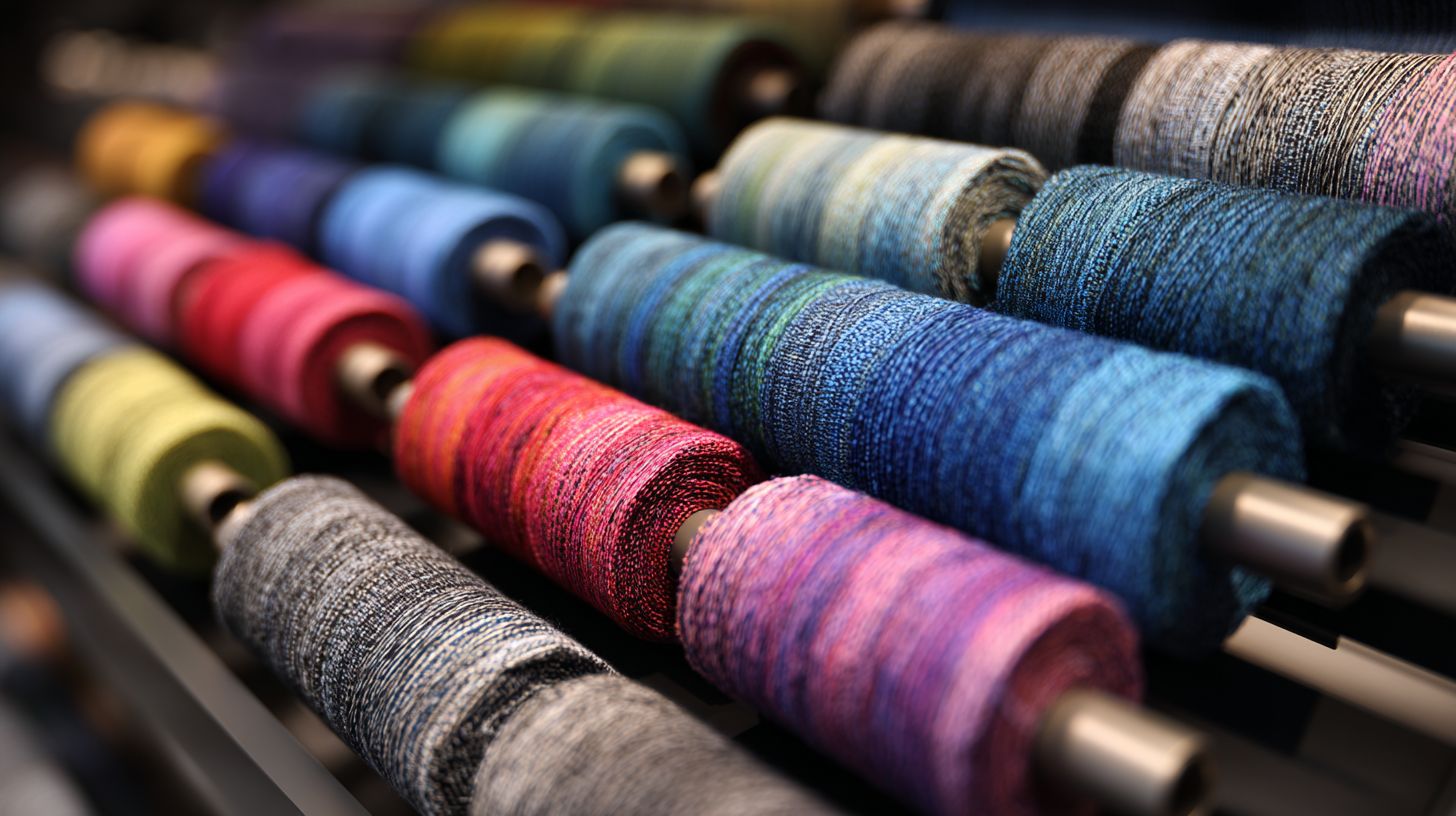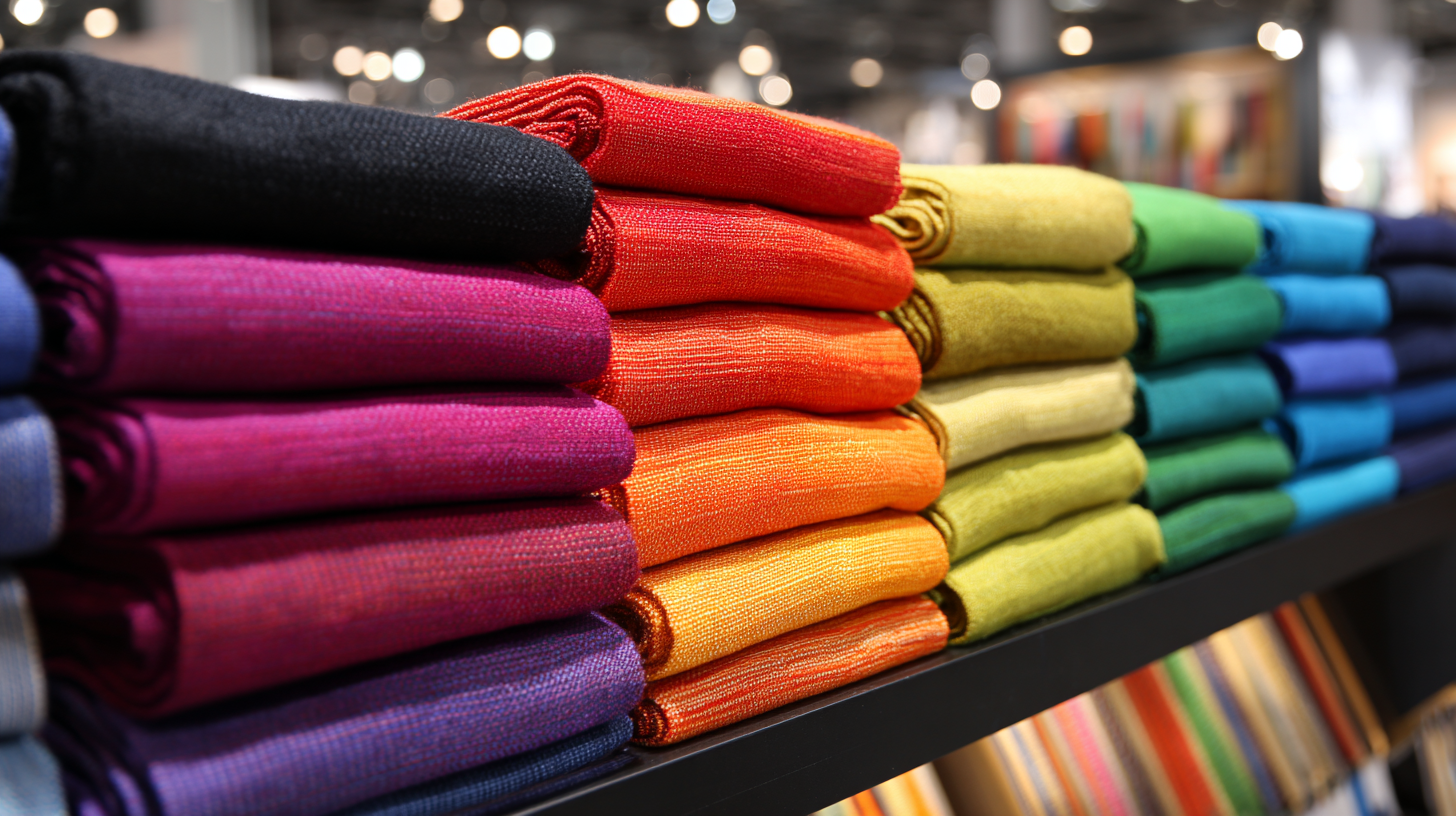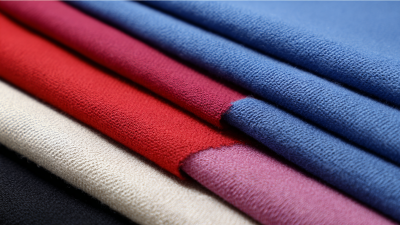The upcoming 138th China Import and Export Fair in 2025 presents a pivotal opportunity for stakeholders in the knit fabric industry to explore innovative trends and technologies shaping the future of this sector. According to the Global Textile Market Report, the knit fabric market is projected to grow at a CAGR of 4.5% over the next five years, driven by increasing demand for versatile and comfortable materials in fashion and activewear.

As sustainability becomes a key focus, the integration of eco-friendly practices in knit fabric production is expected to gain momentum, with reports indicating that over 60% of textile companies will adopt sustainable practices by 2025. This fair will serve as a hub for industry leaders to discuss advancements, showcase new products, and collaborate on strategies that align with emerging consumer preferences and global market dynamics in knit fabric.
The 138th China Import and Export Fair in 2025 is poised to showcase groundbreaking innovations in the knit fabric industry, reflecting future trends that are set to redefine global markets. As sustainability becomes a key focus, manufacturers are expected to present eco-friendly materials that not only reduce environmental impact but also enhance the functionality of knit fabrics. Innovations such as biodegradable fibers and non-toxic dyeing processes are gaining traction, catering to an increasingly conscious consumer base that prioritizes sustainability in their purchasing decisions.
In addition to sustainability, technological advancements play a crucial role in shaping the future of knit fabrics. The integration of smart textiles offers exciting possibilities, from fabrics that can regulate temperature to those equipped with health-monitoring features. At the fair, industry leaders will likely unveil solutions that marry comfort and high performance, exemplifying how digital innovation can elevate traditional knitting techniques. As these trends unfold, the opportunities for collaboration and growth within the global knit fabric market will expand, setting the stage for a dynamic future where creativity and technology synergize.
The knit fabric industry is poised for significant growth as evidenced by recent market analysis projecting a compound annual growth rate (CAGR) of approximately 7.5% from 2023 to 2025. This upward trend reflects an increasing consumer preference for comfortable and versatile textiles suitable for various applications, from high fashion to functional sportswear. The 138th China Import and Export Fair 2025 will serve as a crucial platform for showcasing the latest innovations and trends within this dynamic sector.
Key performance indicators reveal that the global demand for knit fabrics is expected to reach USD 80 billion by the end of 2025, with Asia-Pacific leading the charge, anticipated to account for nearly 45% of the worldwide market share. Factors driving this growth include advancements in knitting technology, eco-friendly fabric development, and rising disposable incomes among consumers. Additionally, the recent report from the Textile Outlook International highlights that sustainable practices in knit fabric production are significantly influencing market strategies, positioning companies that prioritize sustainability as frontrunners in the competitive landscape.
| Key Performance Indicators | 2025 Estimates | Growth Rate (%) |
|---|---|---|
| Global Market Size (USD billion) | 15.2 | 7.5 |
| Production Volume (Million Tons) | 2.1 | 6.0 |
| Export Value (USD billion) | 8.5 | 8.2 |
| Top Exporting Countries (%) | China (35%), India (15%), Turkey (10%) | N/A |
| Sustainable Fabric Adoption (%) | 30 | 12.0 |
The knit fabric industry is at a crucial juncture, particularly as the 138th China Import and Export Fair 2025 approaches. With increasing consumer demand for sustainable products, manufacturers face the dual pressure of implementing eco-friendly practices while maintaining profitability. According to a recent report by Textile World, 78% of consumers prefer sustainable brands, pushing knit fabric producers to adopt greener production methods. Innovations in biodegradable yarns and energy-efficient manufacturing processes are essential to meet these expectations.
However, integrating sustainability into the knit fabric production line presents significant challenges. Research from the Global Organic Textile Standard indicates that only 15% of the world’s textile production incorporates sustainable practices. This statistic highlights the uphill battle manufacturers face, from sourcing sustainable raw materials to ensuring eco-friendly dyeing processes. Companies that invest early in sustainable technologies may find themselves not only fulfilling regulatory requirements but also gaining a competitive edge in a rapidly evolving market. As the industry converges on this transformative path, the dialogue at the China Import and Export Fair will be pivotal in shaping future practices and standards in knit fabric production.

The knit fabric industry is rapidly evolving, driven by significant technological advancements that are reshaping manufacturing processes. Industry leaders are increasingly leveraging automation, artificial intelligence, and sustainable materials, which create not only more efficient production lines but also environmentally friendly options. This transformation is evident at the upcoming 138th China Import and Export Fair in 2025, where innovations in knit fabric will be a focal point.
Tips: When exploring new knit fabric products, consider the sustainability of the materials used. Opt for manufacturers that prioritize eco-friendly practices to support the industry's shift towards greener solutions. Additionally, stay informed about automation technologies that can streamline production and enhance fabric quality.
As the global knitting and crochet market gains momentum, with millions engaging in these crafts, the demand for high-quality knit fabrics will continue to rise. This presents a unique opportunity for brands to not only innovate but also cater to a diverse customer base seeking both functionality and style in their textile choices. Embracing these technological advancements will be crucial to staying competitive in this expanding market.
Tips: Engage with community forums and social media groups to stay updated on new trends and techniques in knitting and crochet. This can provide valuable insights and foster creativity in your fabric choices.
As the knit fabric industry prepares for the 138th China Import and Export Fair in 2025, understanding consumer preferences and market demand shifts becomes crucial. According to a recent report by the Textile Research Institute, the global demand for knit fabrics is projected to grow at a CAGR of 4.8% from 2023 to 2028, driven primarily by increasing consumer interest in sustainability and comfort. This trend reveals a significant shift, as consumers are now prioritizing materials that offer both eco-friendliness and functionality, influencing manufacturers to innovate accordingly.
Furthermore, the rise of athleisure and remote working is reshaping the product ranges offered in the knit fabric sector. A survey conducted by the Fashion Innovation Agency indicated that 62% of consumers are willing to pay a premium for high-quality, sustainable knitwear. This shift in purchasing behavior suggests that brands should focus on enhancing the durability and ethical sourcing of their knit fabrics to remain competitive. With these evolving preferences, the industry is likely to see a diversification of product lines that cater to health-conscious and environmentally-aware consumers, ultimately shaping the future landscape of knit fabrics by 2025.






